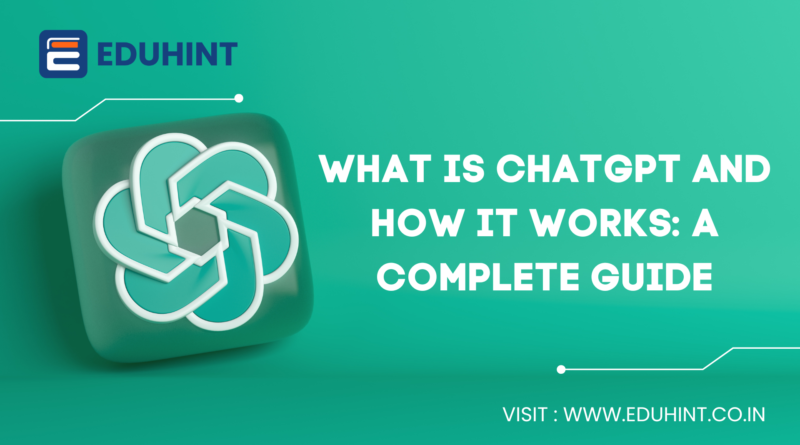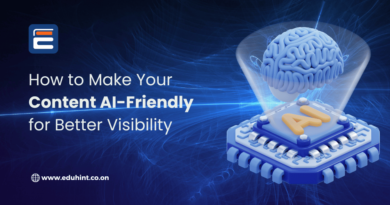5 min readWhat is ChatGPT and How it Works: A Complete Guide
ChatGPT is a variant of the GPT-3 (Generative Pre-training Transformer) language model developed by OpenAI, a company founded by Elon Musk, Sam Altman, Greg Brockman, Ilya Sutskever, and Wojciech Zaremba. The primary objective of OpenAI is to develop and promote friendly AI in a responsible way to benefit all of humanity.
The GPT models are trained on a massive amount of text data and can generate human-like text. GPT-3, which is the model on which ChatGPT is based, is one of the largest language models to date, with 175 billion parameters. The model can perform a wide range of natural language processing tasks, such as language translation, text summarization, and conversation.
ChatGPT is fine-tuned for conversational AI and can generate coherent and contextually appropriate responses to prompts, making it well-suited for chatbot and virtual assistant applications.
Why is chatGPT becoming so popular?
ChatGPT has become popular in recent times due to its ability to generate human-like text. The model has been trained on a massive amount of data, which enables it to understand and use language in a way that is similar to how humans do. This makes it well-suited for a wide range of natural language processing tasks, including conversation.
Additionally, the model is able to generate contextually appropriate responses to prompts, which makes it useful for chatbot and virtual assistant applications. In these applications, ChatGPT can generate responses that are coherent and make sense in the context of the conversation, which can make the interaction feel more natural.
Another reason for its popularity is its accessibility. As OpenAI made the model available through API, it is easy for developers to integrate it into their applications and services, which has led to a wide range of uses and integration in various industries and fields.
How does ChatGPT work?
ChatGPT is a variant of the GPT (Generative Pre-training Transformer) language model. It works by using a neural network architecture known as a transformer. The transformer architecture was introduced in the paper “Attention is All You Need” and is particularly well-suited for natural language processing tasks.
The model is trained on a massive amount of text data, which enables it to understand and use language in a way that is similar to how humans do. During training, the model learns the underlying patterns and structures of the text data, allowing it to generate text that is coherent and contextually appropriate when given a prompt.
When given a prompt, ChatGPT generates a response by predicting the next word in the sequence, given the previous words. The model uses an attention mechanism to weigh the importance of different parts of the input when making its predictions. This allows the model to focus on the most relevant information when generating a response, which improves the coherence and contextuality of the output.
Once the model is trained, it can be fine-tuned for specific tasks, such as conversation. This involves training the model on a smaller dataset of conversational data, which allows it to learn the specific patterns and structures of conversation. After fine-tuning, the model can be used to generate contextually appropriate responses to prompts in a conversation.
What are the limitations of chatGPT?
While ChatGPT is a powerful language model that can generate coherent and contextually appropriate responses, it does have some limitations.
One limitation is that the model is based on the text data it was trained on, so it may not always understand or respond appropriately to certain inputs, particularly those that are out of the distribution of the training data.
Another limitation is that the model can sometimes generate biased or offensive responses, as it has learned these biases from the text data it was trained on. So it is important to be mindful of the potential biases and filter out any inappropriate responses.
Additionally, ChatGPT is not able to perform certain tasks that require knowledge or understanding of the world, like image or voice recognition, or answering questions that require external knowledge.
Lastly, as the model is large and requires a lot of computational power, it can be expensive to run, and may not be accessible to everyone.
Overall, while ChatGPT is a powerful model with many potential uses, it is important to understand its limitations and use it responsibly.
Is ChatGPT free?
ChatGPT is not a standalone product, it is a part of GPT-3 which is a model developed by OpenAI, and it is accessible through OpenAI’s API. Accessing the API requires an API key, and usage of the API is subject to usage fees. However, OpenAI also offers a free plan with limited access to GPT-3’s capabilities, and developers can also explore and experiment with the model via OpenAI Playground.
It’s important to note that even if you have access to the API key, the usage of ChatGPT can be expensive depending on the usage, number of requests and the features that you want to use. So it’s always good to check the pricing before using it.
Here the list of ChatGPT alternative
There are several alternatives to ChatGPT that can be used for natural language processing tasks, such as conversation. Some examples include:
DialoGPT: This is another variant of the GPT model, developed by Microsoft. It is fine-tuned for conversation and can generate contextually appropriate responses to prompts.
BERT: Developed by Google, BERT (Bidirectional Encoder Representations from Transformers) is a transformer-based model that is trained on a large amount of text data. It can be fine-tuned for a wide range of natural language processing tasks, including conversation.
Meena: Developed by Google, Meena is a conversational AI model that is trained on a diverse set of conversations, it’s also fine-tuned for conversation and can generate contextually appropriate responses to prompts.
XLNet: Developed by Carnegie Mellon University, XLNet is a language model that is trained on a large amount of text data using a permutation-based training method. It can be fine-tuned for a wide range of natural language processing tasks, including conversation.
T5: Developed by Google, T5 (Text-to-Text Transfer Transformer) is a transformer-based model that is trained on a large amount of text data. It can be fine-tuned for a wide range of natural language processing tasks, including conversation.
It’s important to note that these models have their own strengths and weaknesses, and the best choice for a particular task will depend on the specific requirements and use case.





Pingback: 10 SEO Best Techniques to Improve Your Organic Traffic - EduHint
Pingback: Power of ChatGPT API: A Comprehensive Guide - EduHint
Pingback: NEMT Software Case Studies: Improve Profitability and Efficiency
naturally like your web site however you need to take a look at the spelling on several of your posts. A number of them are rife with spelling problems and I find it very bothersome to tell the truth on the other hand I will surely come again again.